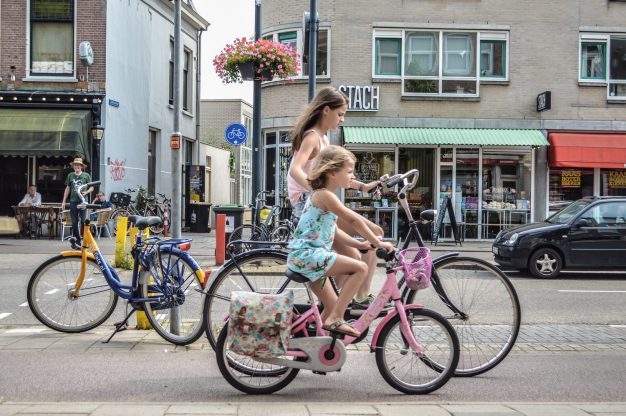
Are European cities doing enough to make themselves cycle-friendly for children?
As European cities continue to grapple with ever-present issues of congestion, pollution, and the need for sustainable transport, cycling has emerged as a promising solution. But are European cities, on the whole, doing enough to make themselves cycle-friendly for children?
Many European cities have made significant strides in improving cycling infrastructure, but the extent to which they are child-friendly varies widely. It’s not difficult to see why cities like Amsterdam and Copenhagen are often cited as benchmarks due to their extensive networks of protected bike lanes, low-speed zones, and traffic-calming measures. These cities prioritise the safety of cyclists, including children, by providing segregated cycling paths that are safe, wide, and well-maintained.
Yet this is not the case sadly in many other cities, where infrastructure often falls well short. While cities such as Paris and Berlin have increased their investment in cycling infrastructure, gaps remain. Protected bike lanes often end abruptly, forcing cyclists into traffic, and intersections can be dangerous without dedicated bike crossings or signals. For a truly child-friendly environment, continuous and safe cycling routes are essential.
‘Protecting vulnerable road users’
European policies on cycling vary significantly, influencing the overall safety and appeal of cycling for children. In some cities, policies have successfully reduced car dominance and made cycling a priority. For instance, Barcelona’s Superblocks initiative restricts traffic in certain areas, creating safer, more pleasant spaces for cycling and walking. Similarly, the Vision Zero policies in Scandinavian countries aim to eliminate all traffic fatalities and serious injuries, with a strong focus on protecting vulnerable road users like children.
However, not all cities have such progressive policies. In many places, cars still dominate the urban landscape, and cycling infrastructure is an afterthought rather than a priority. Without robust policies to reduce car use and enhance cycling safety, it remains challenging to create a genuinely child-friendly cycling environment.
Education plays a crucial role in making cities cycle-friendly for children. Programs like Bikeability in the UK, which teach children how to cycle safely, are essential. These programs equip children with the skills and confidence needed to navigate urban environments on a bike.
Nonetheless, the reach and quality of these programs vary. In some cities, cycle training is a mandatory part of the school curriculum, ensuring all children receive proper instruction. In others, such programs are less accessible, often depending on the initiative of individual schools or local authorities.
Creating a cycle-friendly culture involves more than just infrastructure and policy; it requires a shift in community attitudes towards cycling. Cities like Utrecht and Malmö have cultivated strong cycling cultures where cycling is a normative, everyday activity for people of all ages. Community events, cycling clubs, and local campaigns can play a vital role in fostering this culture.
‘The reach and quality of programs vary’
However, changing community attitudes is often one of the most challenging aspects. In cities where car culture is deeply ingrained, parents may feel that cycling is too dangerous for their children, even if infrastructure is available. Comprehensive public awareness campaigns and community engagement are essential to shift perceptions and encourage more families to cycle.
While many European cities have made commendable efforts to become more cycle-friendly, there is still much work to be done to ensure these environments are safe and inviting for children. Leading examples like Amsterdam and Copenhagen show what is possible with a commitment to infrastructure, policy, education, and culture.
However, in many cities, piecemeal approaches and insufficient investment mean that cycling, particularly for children, remains a risky and less attractive option. To truly transform urban environments and make cycling a viable and safe mode of transport for children, a more comprehensive, committed approach is necessary across Europe. This means a proper, ‘grown up’ strategy in which policymakers and city planners work with residents and local organisations to deliver change.




